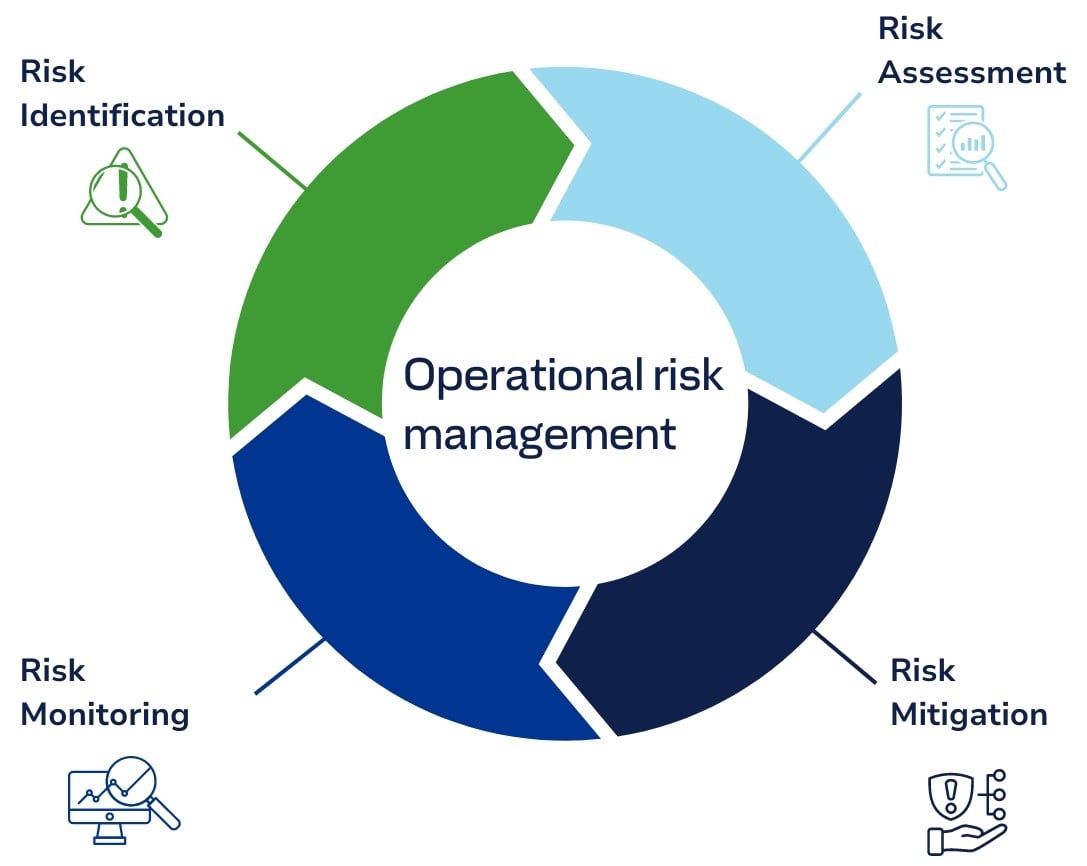How does operational risk management (ORM) help the oil and gas industry mitigate risk?
The oil and gas industry has stringent regulations, complex supply chains, and rapid technological advancements. Operational Risk Management (ORM) is vital to maintaining business continuity, resilience, and long-term success. While ORM contains many facets, four main areas are particularly challenging:
- Compliance
- Globalization and supply chains
- Technology advancement and cyber threats
- Well-being of personnel
By addressing these risks proactively, oil and gas companies can avoid financial and reputational damage and enhance their resilience and long-term success in a challenging and dynamic industry.

Meet compliance requirements
The oil and gas industry are heavily regulated, with strict guidelines for environmental protection, worker safety, and operational practices. Failure to implement adequate risk management processes can result in non-compliance, leading to hefty fines, legal penalties, or even the revocation of operational licenses.
Effective ORM ensures organizations adhere to relevant regulations and mitigate risks associated with non-compliance. With a sound risk management practice, organizations commit to stakeholders and avoid costly penalties.
Predict risk in globalization and complex supply chains
Global oil and gas companies operate across multiple jurisdictions and rely on intricate supply chains. This complexity increases the potential for operational risks, such as supply chain disruptions, cultural misunderstandings, or geopolitical events.
When organizations fail to utilize ORM, they are vulnerable to disruptions in operations. Problems could include product or service delivery delays, costly downtime, and lost productivity. ORM plays a crucial role in actively mitigating disruptions to business, ensuring business continuity and resilience in the face of global challenges.
Stay ahead of technological advancements and cyber threats
The rapid technological advancements and the dependence on digital systems in the oil and gas sector have introduced significant risks, particularly in the form of cyber threats. Data breaches, system failures, and cyber-attacks can have severe consequences, including financial losses, reputational damage, and operational disruptions.
Effective ORM helps organizations implement robust cybersecurity measures. Quality software identifies and addresses vulnerabilities in an organization's technology infrastructure and develops incident response plans. This proactive management mitigates the impact of cyber threats and avoids damage to public perception and stakeholder trust. Implementing comprehensive cybersecurity measures and ensuring regular employee training and awareness can significantly reduce the risk of cyber-attacks and the associated reputational fallout.
Safeguarding the well-being of personnel
In the sometime hazardous oil and gas industry, ensuring employee safety is paramount. Industry-wide, there are stringent safety regulations. Companies must implement comprehensive health, safety, and environmental (HSE) risk management strategies to meet them effectively. Focusing on human-centred design and safety culture reduces the likelihood of accidents and improves overall safety performance.
A robust HSE program fosters a risk-aware culture where employees feel empowered to report potential risks, enabling rapid crisis response and reducing incidents. Integrating advanced risk tools, like Synergi Life and fostering a strong safety culture enhances personnel well-being, reduces accidents, improves morale and productivity, contributing to organizational success.


